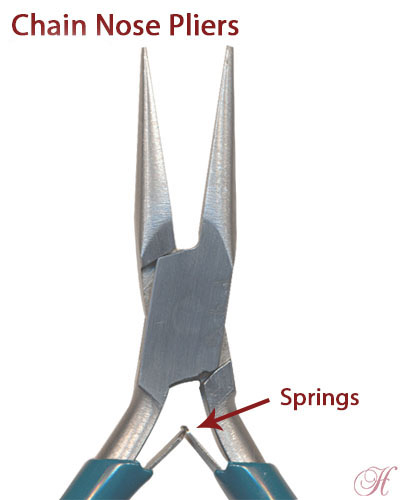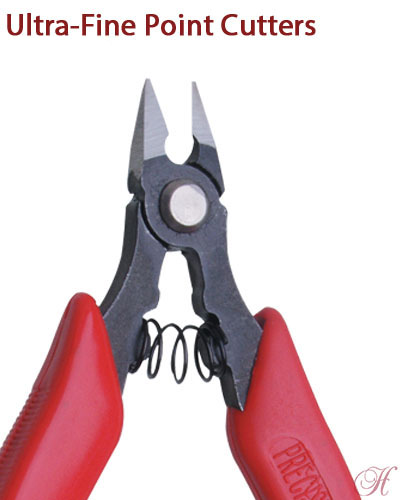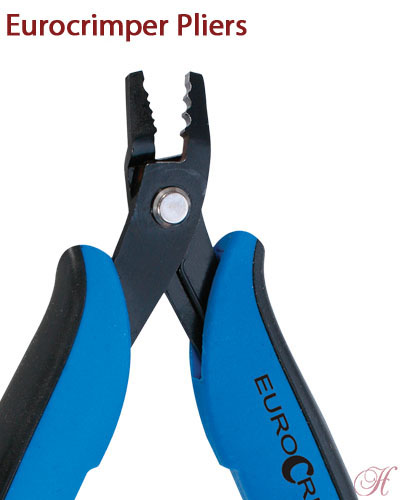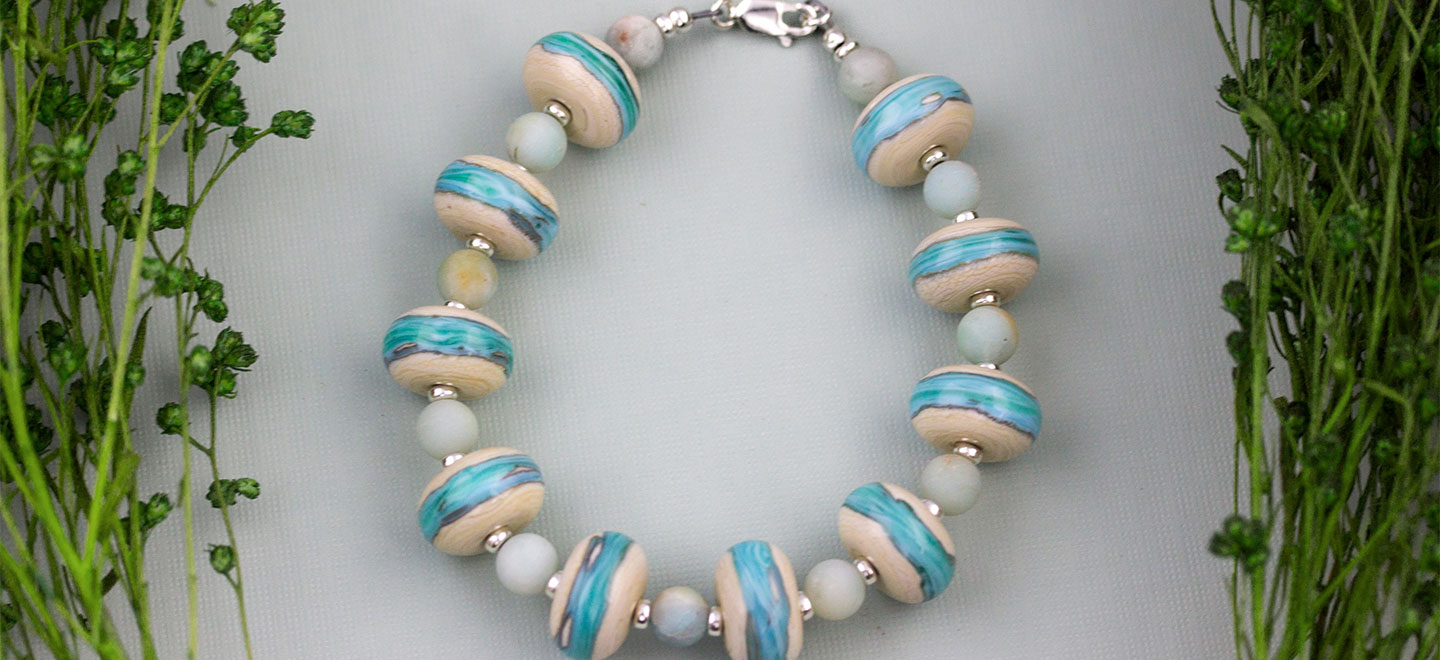Learn what you need to start beading! We've gathered up a list of the beading tools, components, and supplies you'll want to have ready. We also have a video on finishing your beaded jewelry ends along with lots of helpful tips.
You can learn how to make simple beaded jewelry in an hour and spend a lifetime perfecting it! That's why jewelry beading is so much fun, it's easy to get started yet the different shapes and sizes of beads can keep you challenged in exciting ways as you develop your skills. Another reason to love beading is that it's ageless, anyone from teens on up can enjoy this activity and learn this art form. In this article, we'll cover the jewelry tools and components you'll need to get started, but first, the most difficult part of beading for beginners is how to finish the ends. In fact, finishing beaded ends is the one question we get asked the most. How do you secure the beads? How do I add a lobster claw or jump ring? What is a crimp or crimping tool? Below is a video on finishing the ends of a beaded jewelry piece.
What you need to start beading
The recommended budget for jewelry beading tools
I would recommend a $75-100 initial budget for jewelry tools and supplies. The pliers, cutters, and crimpers listed below are a one time only purchase and will last for years to come. Here is a list of the essential jewelry making tools and supplies that you'll need when beginning beading:
- Chain nose pliers = $10.00 each (you'll need two pairs for opening and closing jump rings)
- Ultra-fine Point Cutters (a.k.a. nippers) = $8.00
- Bead Crimpers = $15.00
- Adhesives = $5 - $10
- Stringing Wire (100 foot spools) = $20 - $40
Shop for beading tools easily with our beading tool kit.
Shopping for beads is the fun part!
Let's talk about shopping first! It's exciting when you begin to build up your array of beads. You'll find beads from all over the world, in all kinds of shapes, sizes, and colors and once you start planning out your designs you'll be hooked. If you're budgeting, get a general idea of what size beads you want prior to shopping. This will help keep you focused because you still have a few other things to purchase before you can finish your piece:
- Closures (spring rings, lobster clasps or toggles)
- Jump Rings
- Crimp Beads
For every bracelet or necklace that you make you need 1 closure, 2 jump rings and 2 crimp beads. That's the standard but as you become comfortable beading, there are lots of other beading supplies (including crimp covers, beads caps, and cones) that you'll eventually add to your jewelry designs.
Organize your beading tool stash space
Organization is key when you're beginning to bead. As these jewelry tools and small components accumulate, it will become important to find things quickly. Plastic compartmentalized containers work well keeping your items separated plus they're inexpensive and easy to store on a shelf.
Separate the beading tools and precious metals. If it were me, I would separate the sterling silver items, like jump rings and closures, from the adhesives. Fumes from certain adhesives can make your sterling silver items tarnish quickly!
Tip: It's always a good idea to store any sterling silver components in ziplock plastic bags with one anti-tarnish tab per bag. This simple step will help prevent tarnishing on your sterling silver items.
Breakdown of Beading Tools
Chain Nose Pliers
Critical as a beading tool! Two chain nose pliers are handy when opening and closing sterling silver jump rings. When opening and closing a jump ring you do not pull the jump ring ends apart, instead, you twist them open and closed. This prevents the jump rings from getting misshapen plus it work hardens them so that they're stronger and that's a good thing!
Tip: When beading you use your pliers quite a bit, so be sure when you purchase pliers that they have spring handles. These types of handles allow the pliers to spring open on their own every time you close them. Spring-loaded handles are much easier on your wrists especially if you are beading a lot.
Cutters
Beading requires cutting tight places with fine tipped flush cutters. For instance, when snipping off the extra wire after crimping the end. This extra wire is snuggled up between the last bead and the crimp, so that's one small space to work in.
Crimping Pliers
This beading jewelry tool is a must! Close crimps with crimping pliers that are used at the end of necklaces to secure the beads on the stringing wire. Simple and easy to use they're an essential tool for beaders. The video above shows you how to use these pliers with crimp tubes and covers.
Jewelers Glue - secure those knots!
Knots that tend to unravel over time can be secured with just a drop of GS Hypo Cement or Starbond adhesives. That extra support is vital to keeping your knots secure and strong and with shelf lives of a year or longer, this is a great purchase. One bottle or tube will truly go a long way!
Beading Wire
OK, not a tool. But, this simple beading supply item will get you underway! Stringing wire is a crucial component when planning out your projects. There are a lot of choices but two of the most important ones are the diameter of the wire and the strength. The diameter is important because bead holes can be extremely small and you need a beading wire that can fit through the hole size(s) that you are working with. Strength is just as important. You need a stringing wire that's long-lasting and strong so it can handle the weight of the beads.
Beadalon and Soft Flex are superior beading wires for their strength and flexibility.
Beadalon is made out of nylon coated stainless steel and although it is made from metal it feels like thread. Inside of this abrasion-resistant, nylon coatings are either 19 or 49 strands of twisted miniature wires. The more stainless steel wires it has, the more flexible it is. So although they are both super strong, the 49 strands of wire create a more flexible stringing wire than the 19 strand does. This is great for beaders! Sometimes you don't want that much flexibility for say collars or choker length necklaces, however, you may want more flexibility in a longer beaded necklace.
Soft Flex is also a nylon coated stainless steel product. You have a choice between 21 or 49 micro woven stainless steel strands which are then braided together. It is a lead-free, hypoallergenic product.
Start beading today! Have fun on your beginning beading adventure and check out our wide selection of High Quality Beading Supplies for sterling silver and gold-filled beads, caps, crimps and more!
Got questions? Email our studio coordinator Sylvie at [email protected]. We'd love to hear from you. Sorry, studio support is not available by phone. Emails only, please.







